Create a Calming Space with These Bedroom Plants
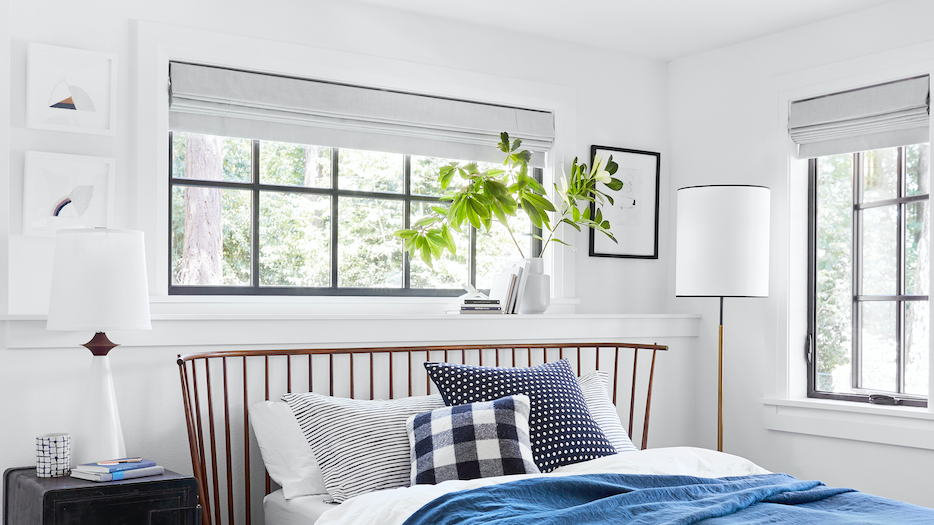
Are you looking for bedroom decorating ideas that go the extra mile?
Houseplants can do more than just bring a splash of green indoors. Recent research says plants may make you feel less stressed, which is always welcome when it's time to catch some Z's.
In a systematic review published in the International Journal of Environmental Research and Public Health in June 2022, people who had indoor plants showed improved cognition and more relaxed physiology.
So, consider making your sleeping chambers a bit dreamier with the best plants for the bedroom.
What to Consider When Choosing Bedroom Plants
Deciding what are the best bedroom plants for your sleeping chamber comes down to the plant's care needs. Most house plants need direct or indirect sunlight and do best when they receive a minimum of six hours a day to grow and thrive.
South and east-facing windows receive the most light, so figure out your windows' orientation. Consider if you have space to place them next to the window or on a nearby shelf or desk that gets ample light.
What’s the Biggest Mistake New Plant Parents Make?
Many new plant parents are eager to tend to their houseplants. One of the biggest mistakes they often make is providing more water for their indoor plants than it needs.
A houseplant that receives too much water often leads to soggy or saturated soil, making it difficult for the water to drain away. When soil remains too wet for too long, this can lead to root rot. Before giving your indoor plants another drink of water, check the soil.
Should I Sleep with Plants In My Bedroom?
The simple answer is yes. Sleeping with plants in your bedroom is a great idea!
Houseplants can provide a sense of calm, as well as a connection to nature which is relaxing—just what you want when you're ready to wind down. So we highly recommend decorating your cozy space with as many various shades of greenery as you like. Here are some of our favorite plants for the bedroom.
Looking to put plants elsewhere in your house? Some ideas:
Lavender (Lavandula)
Though it’s not typically thought of as a houseplant, lavender can do well indoors under the right conditions.
Along with air-purifying qualities, lavender also brings aromatherapy benefits to the bedroom. Research shows that inhaling lavender essential oil can reduce blood pressure and heart rate. So before heading to dreamland, take a moment to smell the lavender!
Bedroom Plant Care Tips: Give lavender bright, direct light for a few hours every day, preferably in a south-facing window, and water lightly when the soil is slightly dry. Don’t overwater.
Pet safe? No, the ASPCA says lavender is toxic to pets.
Related: A New Company Claims Its Plants Can Purify Air 30 Times Better
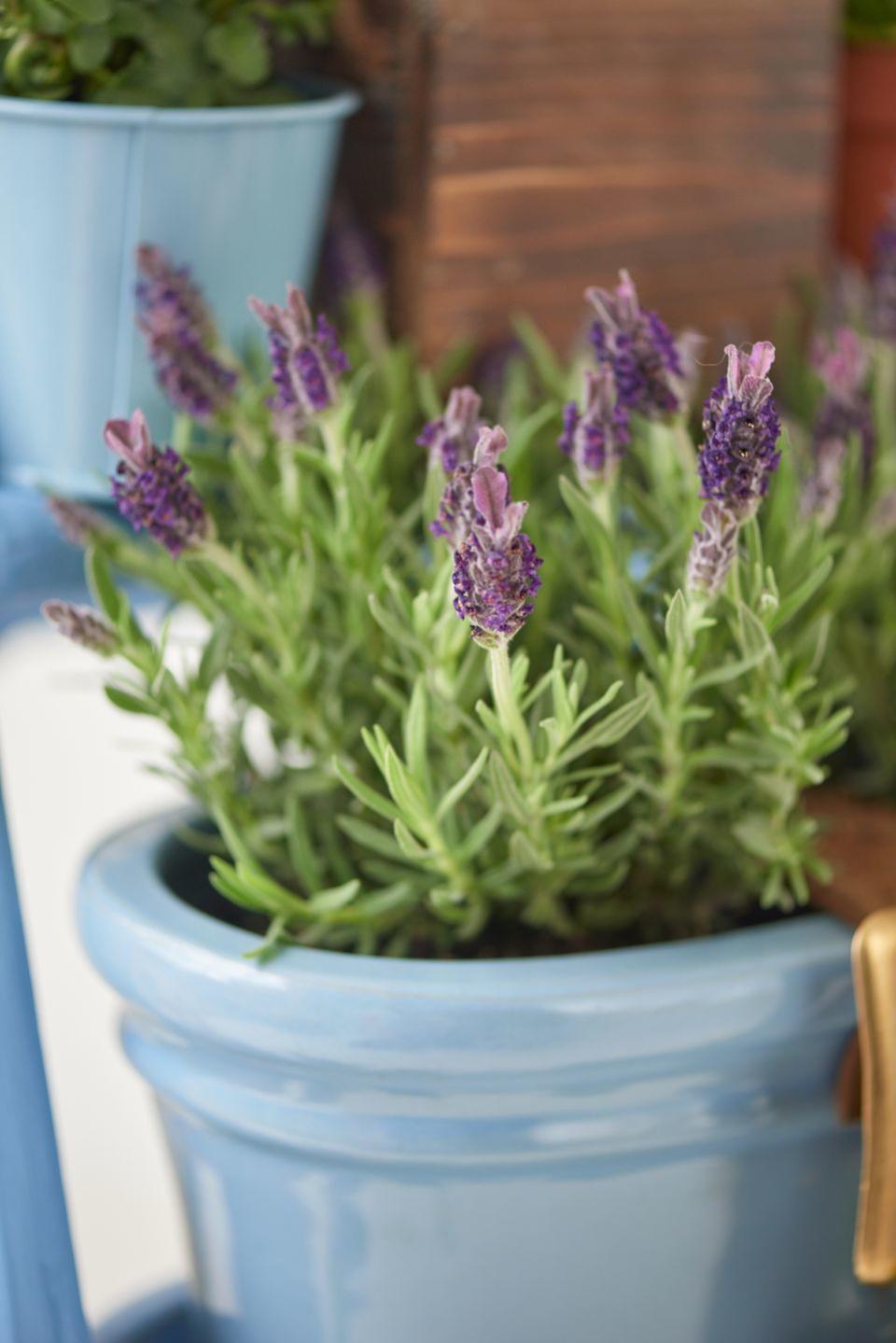
Rubber Plant (Ficus elastica)
With large shiny leaves and a fun, beefy shape, this plant adds strong vertical interest to any room.
Bedroom Plant Care Tips: This plant likes moderate to bright light and light, constant moisture. If you feel the need to prune it, just be sure to wear gardening gloves to keep its sticky sap off your fingers.
Pet Safe? No, according the ASPCA, ficus are toxic to pets.
Related: How to Care for a Rubber Plant Like a Pro
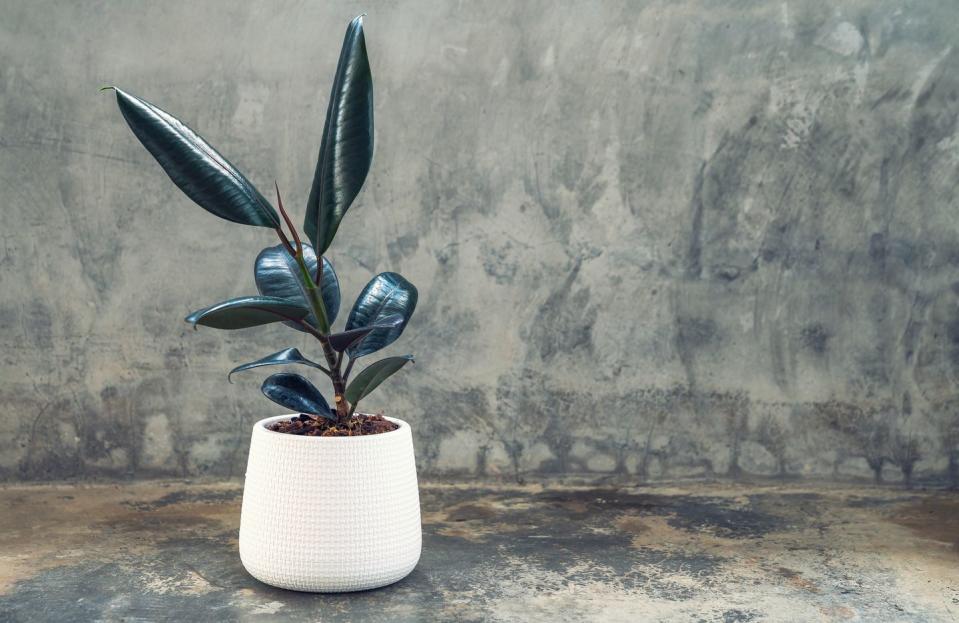
Lady Palm (Rhapis excelsa)
Multiple fronds in an elegant fan pattern make this a beautiful plant, no matter your personal decor style. It’s a fairly easy one to grow, too, compared to many other palms.
Bedroom Plant Care Tips: Lady palms prefer bright indirect light and require water only when the top inch of soil is dry.
Pet Safe? Yes the ASPCA says lady palm are non-toxic.
More: How to Grow and Care for Indoor Palm Plants
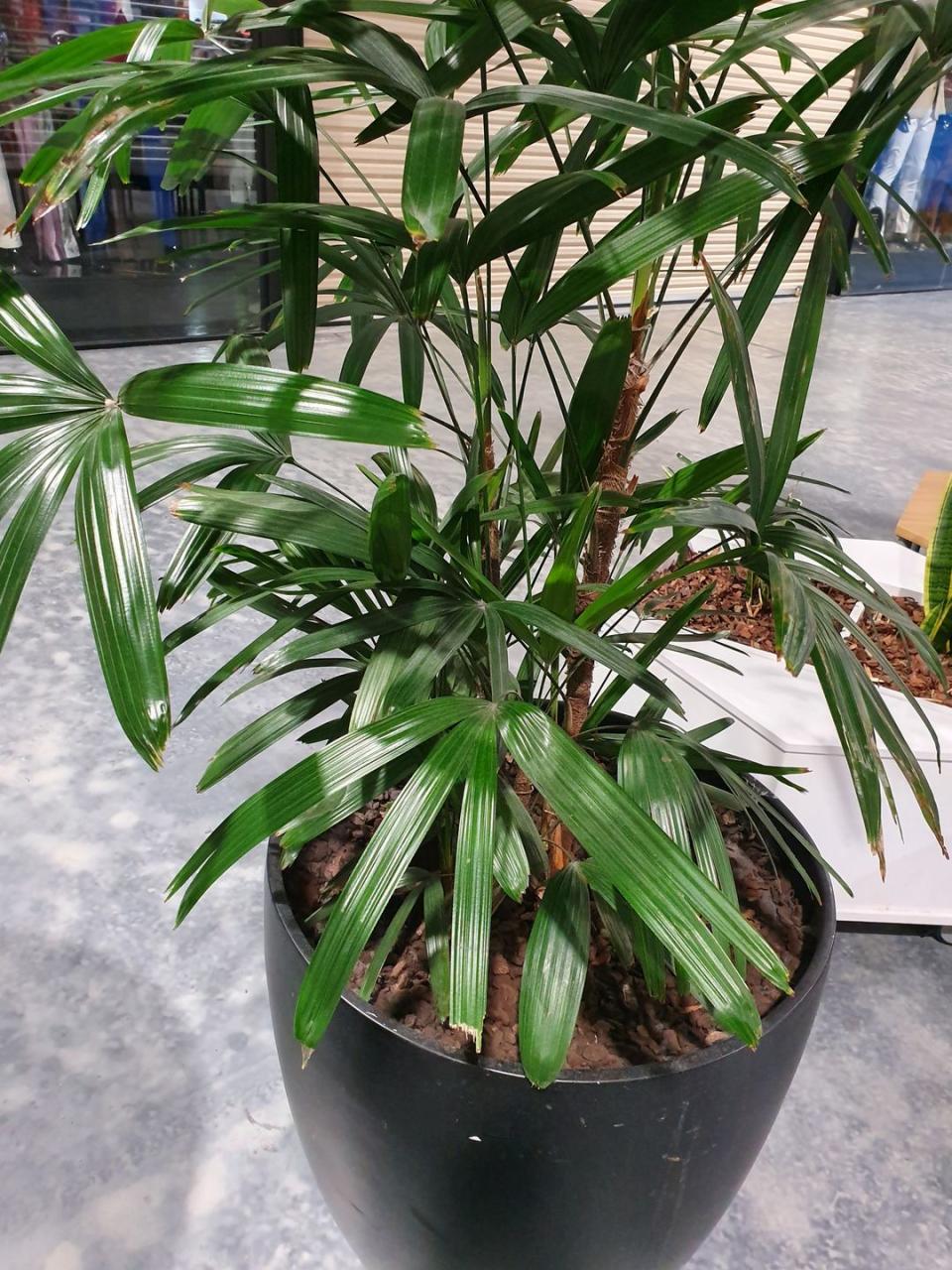
English Ivy (Hedera helix)
This hardy ivy thrives in pots, hanging baskets, or mixed with other taller houseplants in a shared pot.
Be aware: While it can be pretty indoors, it's not good to plant outside, as it is an invasive species in much of the U.S.
Bedroom Plant Care Tips: English ivy needs moderate light in spring and summer, and it requires bright light (or additional fluorescent light) in fall and winter. Let the soil surface dry a tad between waterings, but don’t let the plant totally dry out.
Pet Safe? No, according to the ASPCA, this ivy is toxic to pets.
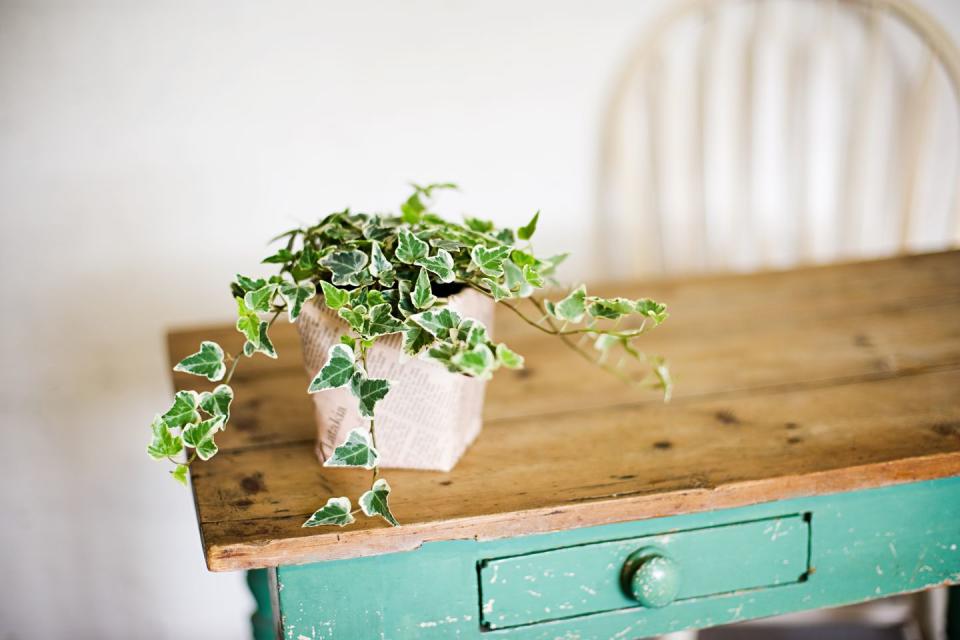
Areca Palm (Dypsis lutescens)
The plumes of this gorgeous palm can reach 6 to 7 feet tall, so be sure to give it plenty of space.
Bedroom Plant Care Tips: Give your areca palm bright, indoor light. During spring and summer, it will need constant light moisture. (But don’t let it get soggy!)
Pet Safe? Yes, this plant is non-toxic to pets, as per the ASPCA.
Related: How to Grow and Care for Indoor Palm Plants
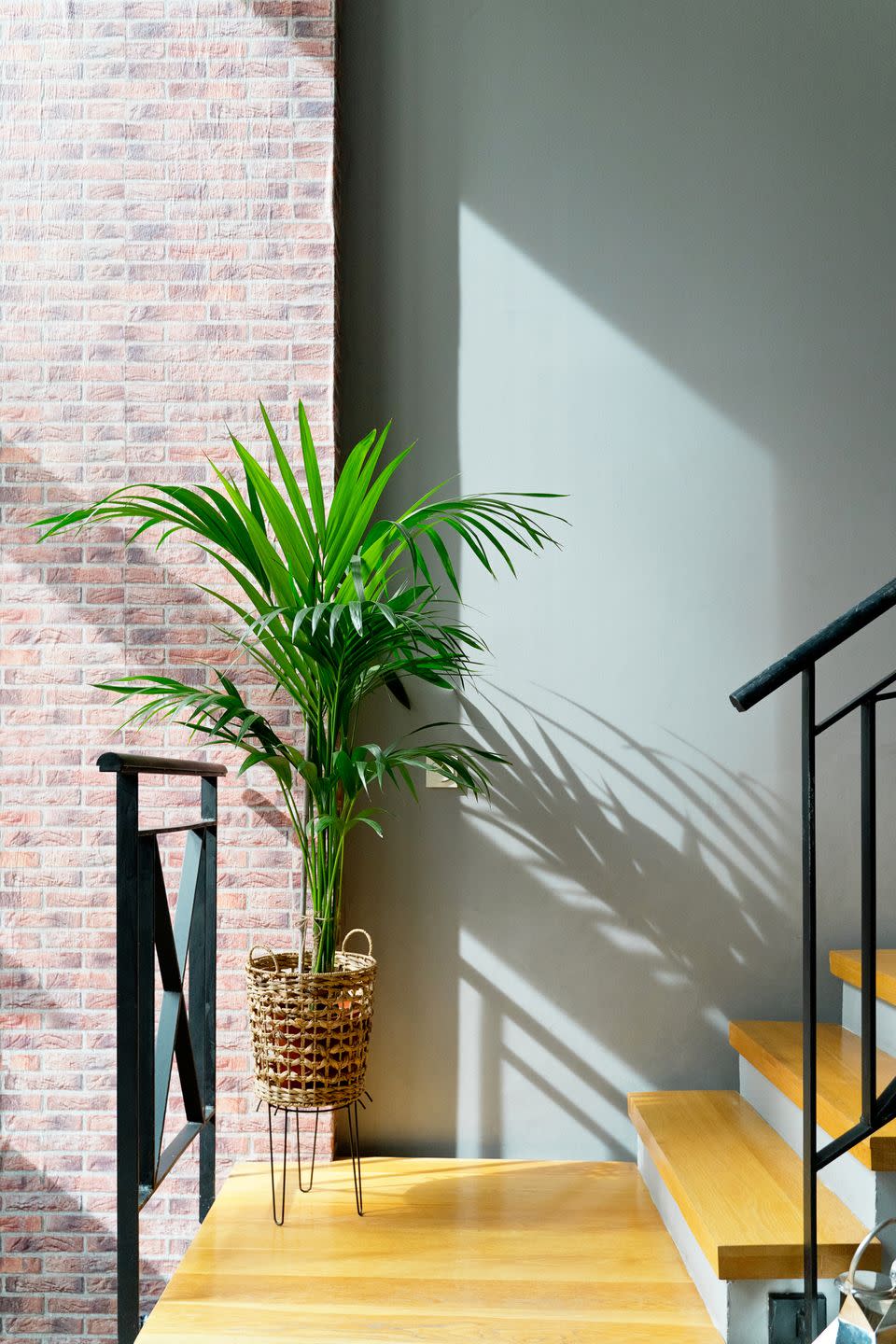
Boston Fern (Nephrolepis exaltata)
These lush ferns are an inexpensive, classic houseplant, and their arching, bright green fronds always look lovely. But be warned: They can be a bit of a diva indoors, needing a lot of care.
Bedroom Plant Care Tips: Boston ferns prefer lots of light, and they'll need to be misted every day. Alternatively, you can try putting them on a tray of pebbles filled with water. What's more, they also tend to shed regularly… so, like a parent, you should be prepared to pick up after them!
Pet Safe? Yes, this plant is non-toxic to pets, as per the ASPCA.
Read more: Reviving a Boston Fern
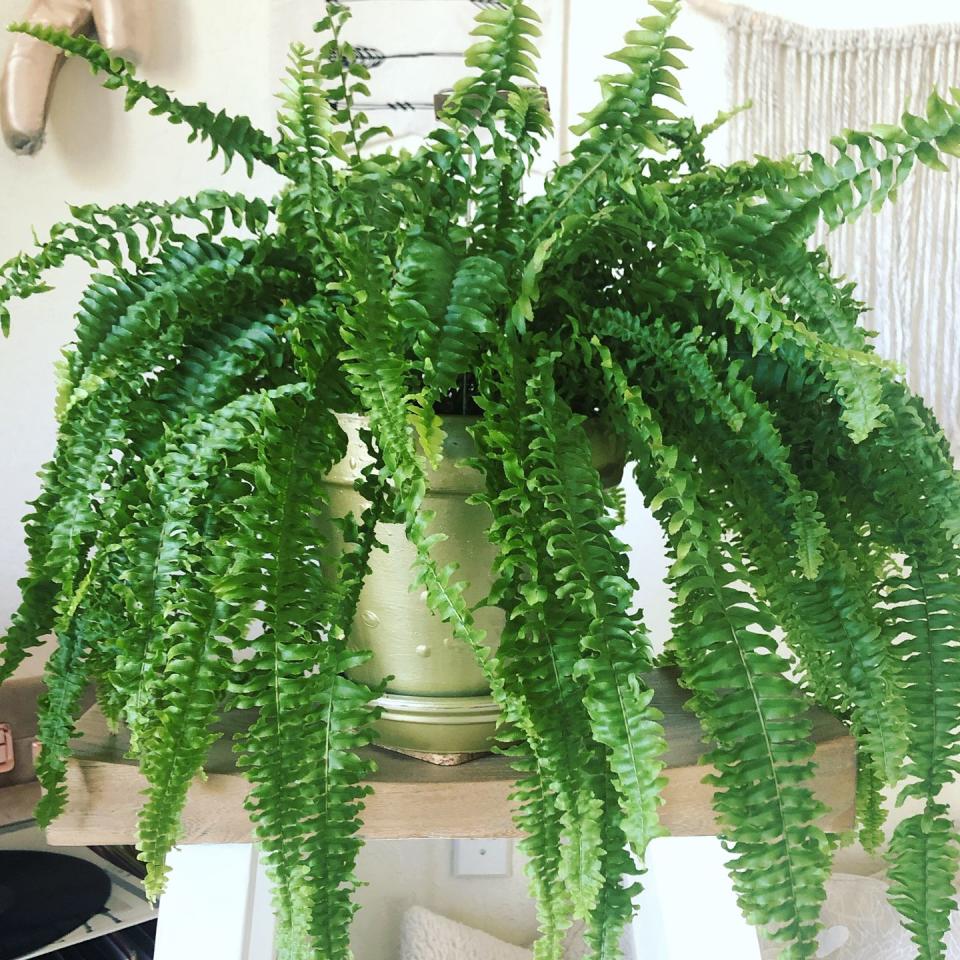
Chinese Evergreen (Aglaonema spp)
This easy-to-grow plant has glossy, pale green leaves accented with white markings.
Bedroom Plant Care Tips: Chinese evergreen tolerates low indoor light, and prefers its soil to be lightly moist at all times, but despises cold air. Be sure to keep it away from drafts!
Pet Safe? No. Insoluble calcium oxalates make this toxic to pets and humans.
More: How to Care for Aglaonema, AKA Chinese Evergreen Plant
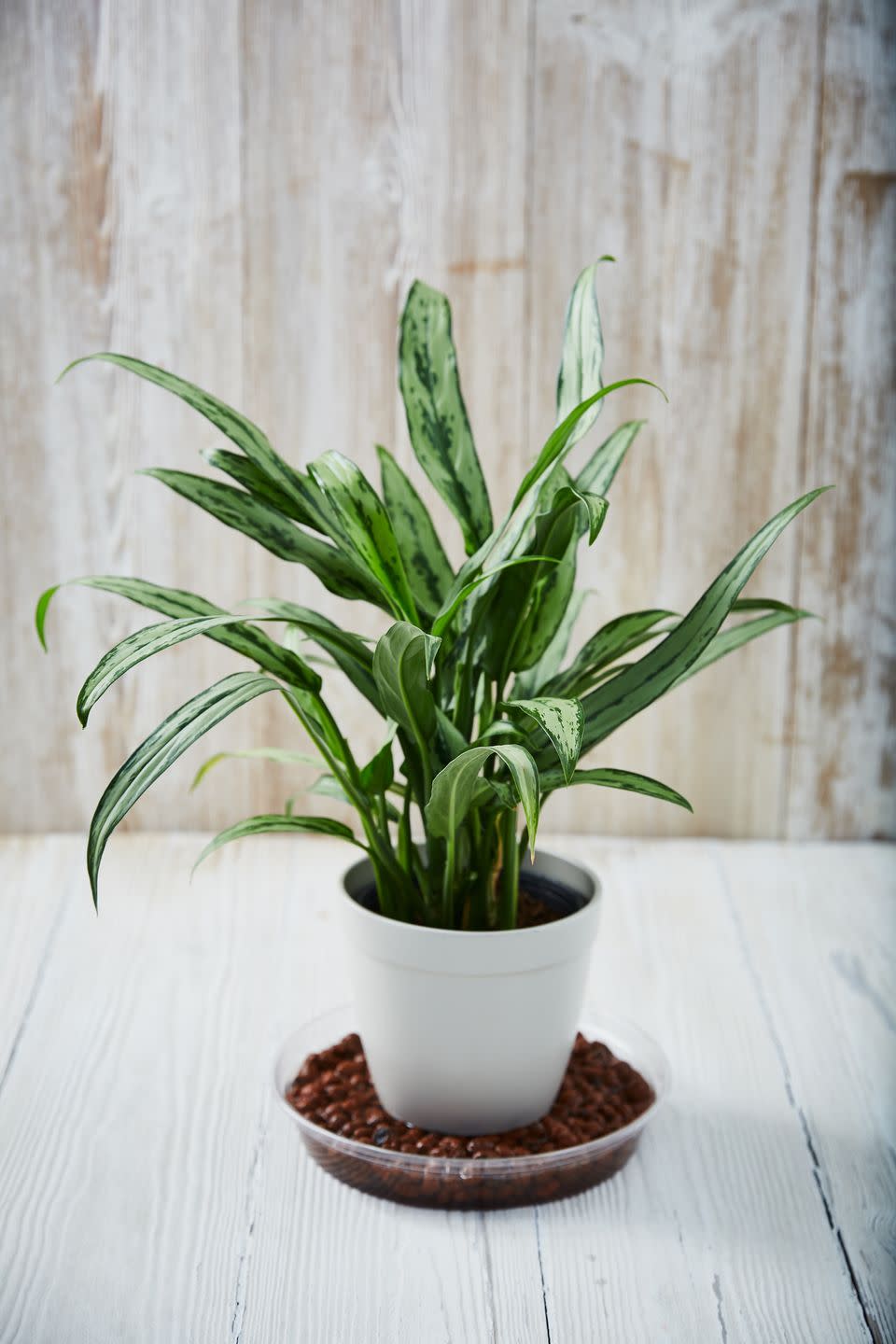
Snake Plant (Dracaena trifasciata)
Dramatic, sword-like leaves define this striking plant (and also lend it the not-so-flattering alternate name of "mother-in-law’s tongue").
It’s tough as nails, so give it a try if you’re not typically known for having a green thumb. In the right conditions, it can live for decades!
Bedroom Plant Care Tips: Bright, indirect light is best for this plant, which also only needs to be watered when the soil becomes nearly dry.
Pet Safe? No, the ASPCA lists this as toxic to pets.
Read more: How to Care for a Snake Plant Even if You Don't Have a Green Thumb
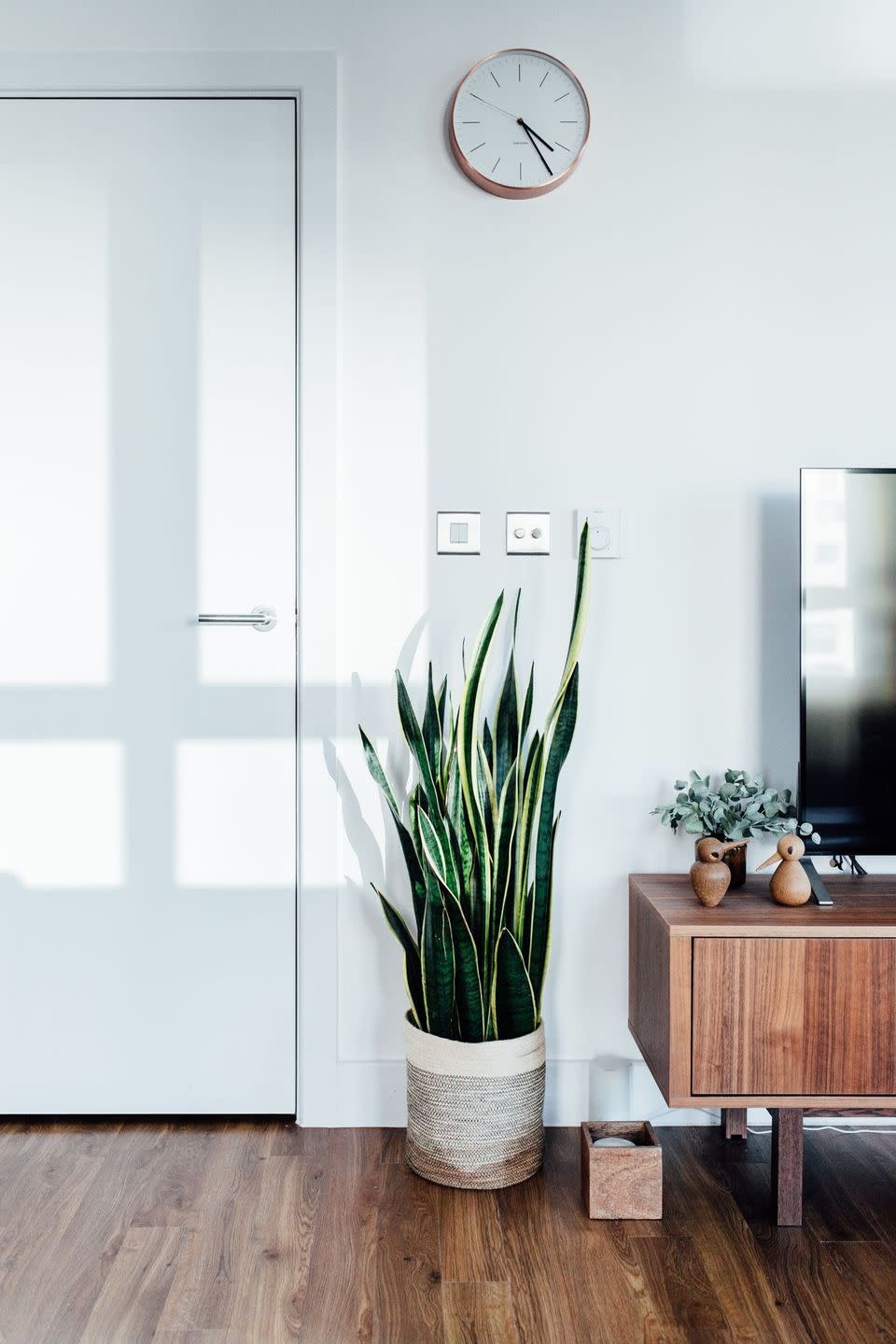
Dracaena (various species)
Dracaena are easy-to-grow plants with long, strappy leaves, some of which have beautiful red markings. Not sure which variety to try? Look for dragon tree, especially ‘Tricolor’ for interesting foliage, ‘Janet Craig’, or ‘Masangeana’ (sometimes called "corn plant"), or Lucky Bamboo.
Bedroom Plant Care Tips: Whichever one you go with, know that all Dracaena species prefer similar conditions: moderate to bright indirect light, and soil that’s kept lightly moist.
Pet Safe? No, the ASPCA lists all dracaena as toxic to pets.
Read More: How to Care for Lucky Bamboo
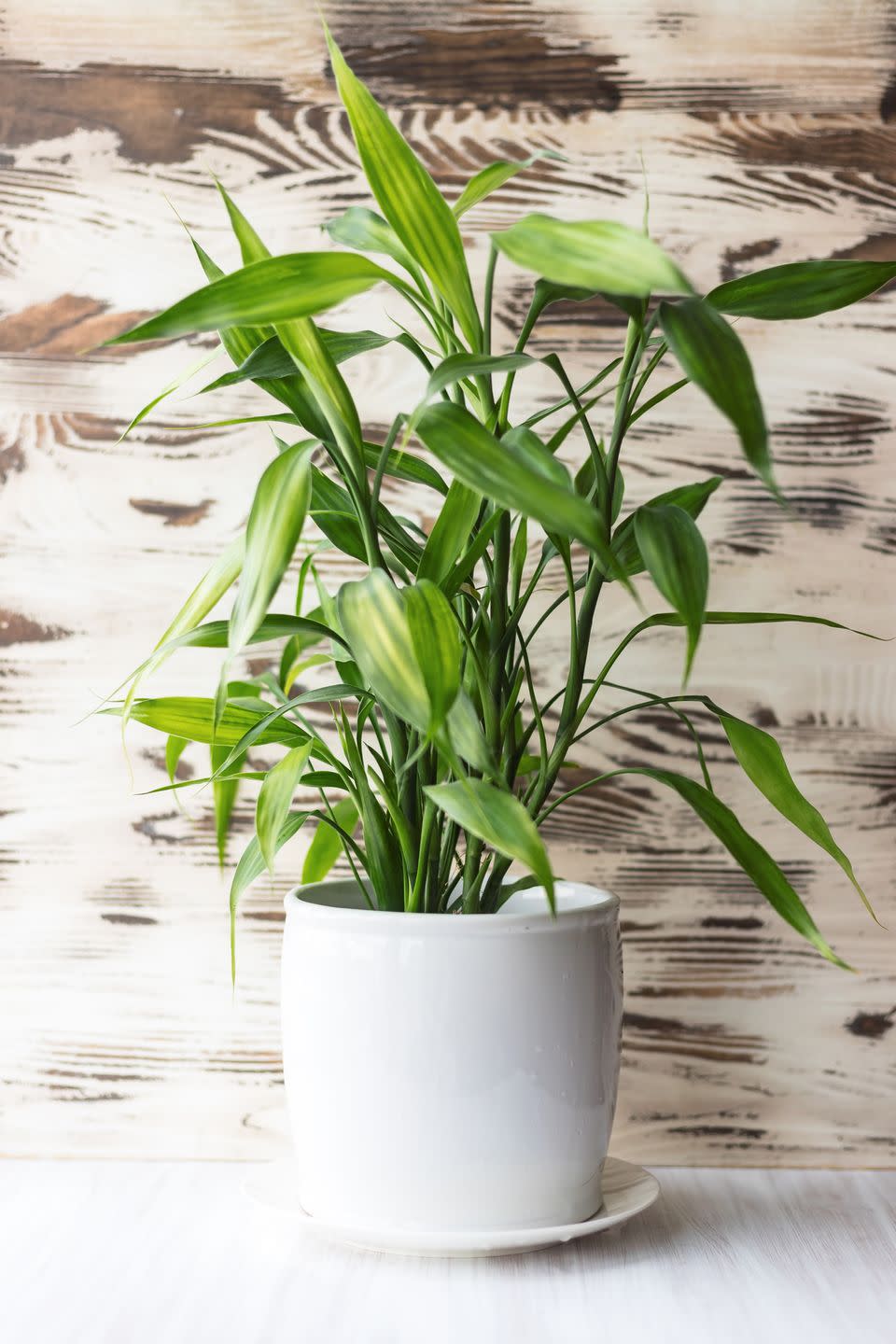
Split-Leaf Philodendron (Philodendron Selloum)
This spectacular but easy-to-manage plant has huge leaves with delicate, lacelike edges. Make room for this one—it can grow 3 to 4 feet tall and 2 to 3 feet wide.
Bedroom Plant Care Tips: Give your plant moderate light, and water it when top soil becomes dry.
Pet Safe? No, philodendron are toxic to pets.
Read More: These Fool-Proof Philodendron Care Tips Will Have Your Plant Thriving
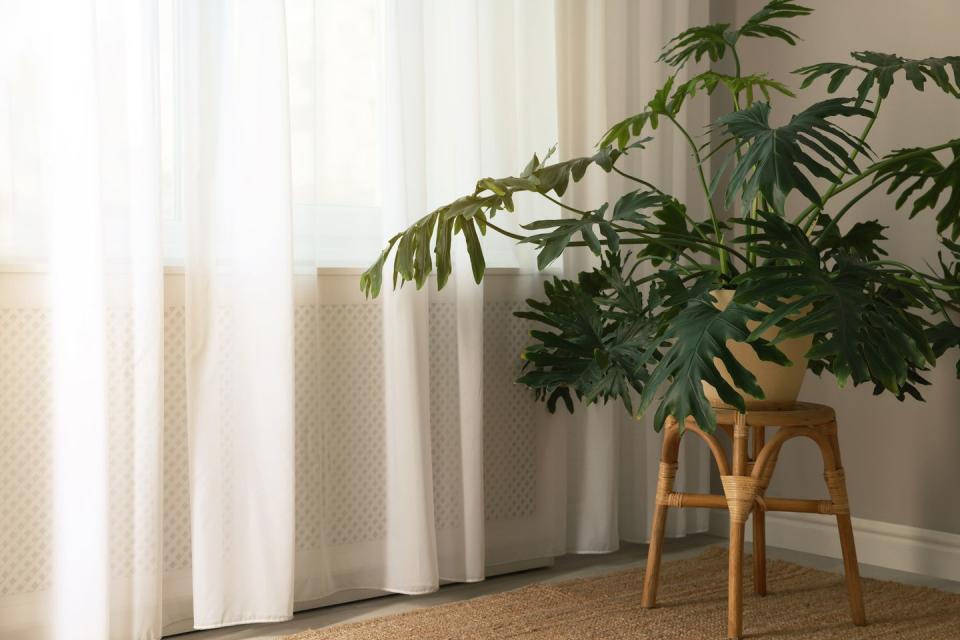
Dieffenbachia (various hybrids)
Dieffenbachia is a fast-growing plant with big, showy leaves. If you're looking for a statement piece to decorate your bedroom, these plants are a great choice. Place it in an area that receives bright and indirect light throughout the day.
Bedroom Plant Care Tips: Dieffenbachia only needs moderate amounts of filtered light. Keep the soil lightly moist, but never soggy.
Pet Safe? No. Insoluble calcium oxalates make this toxic to pets.
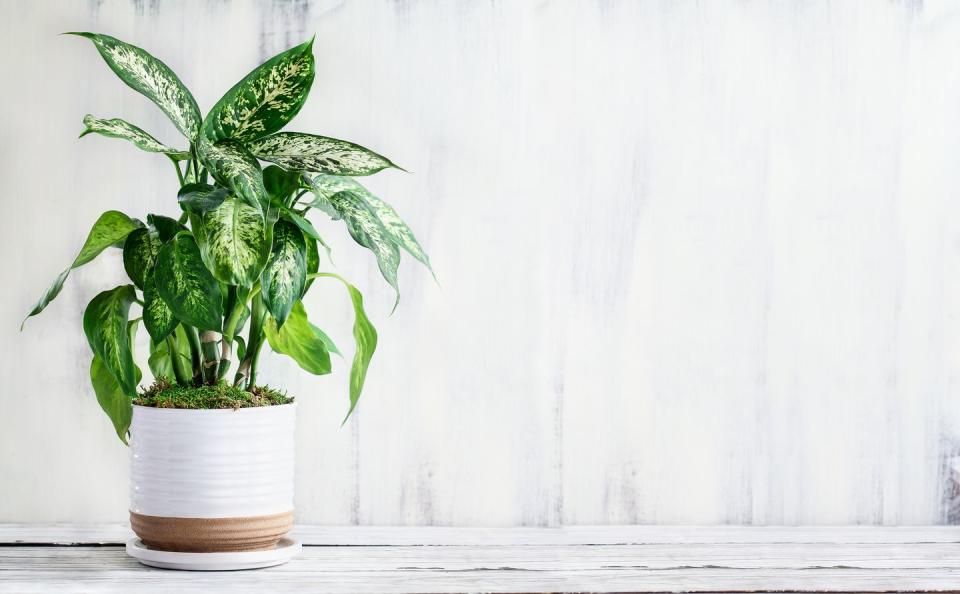
Rosemary (Rosmarinus officianalis)
This culinary herb has a pleasant, piney scent, particularly after you brush your fingertips against it—which we suggest doing in the morning when you get out of bed: Research shows that simply smelling this therapeutic herb can clear the mind and elevate your mood.
How about that? A bedroom plant that gives you an instant dose of Monday motivation!
Bedroom Plant Care Tips: Indoors, rosemary needs strong light, so keep it by a bright window (preferably a south-facing one). Allow the soil to dry within an inch of the surface between waterings, and turn the pot every week so the plant grows more evenly.
Pet Safe? Yes, rosemary is edible and non-toxic to pets.
Read more: How to Grow an Indoor Herb Garden
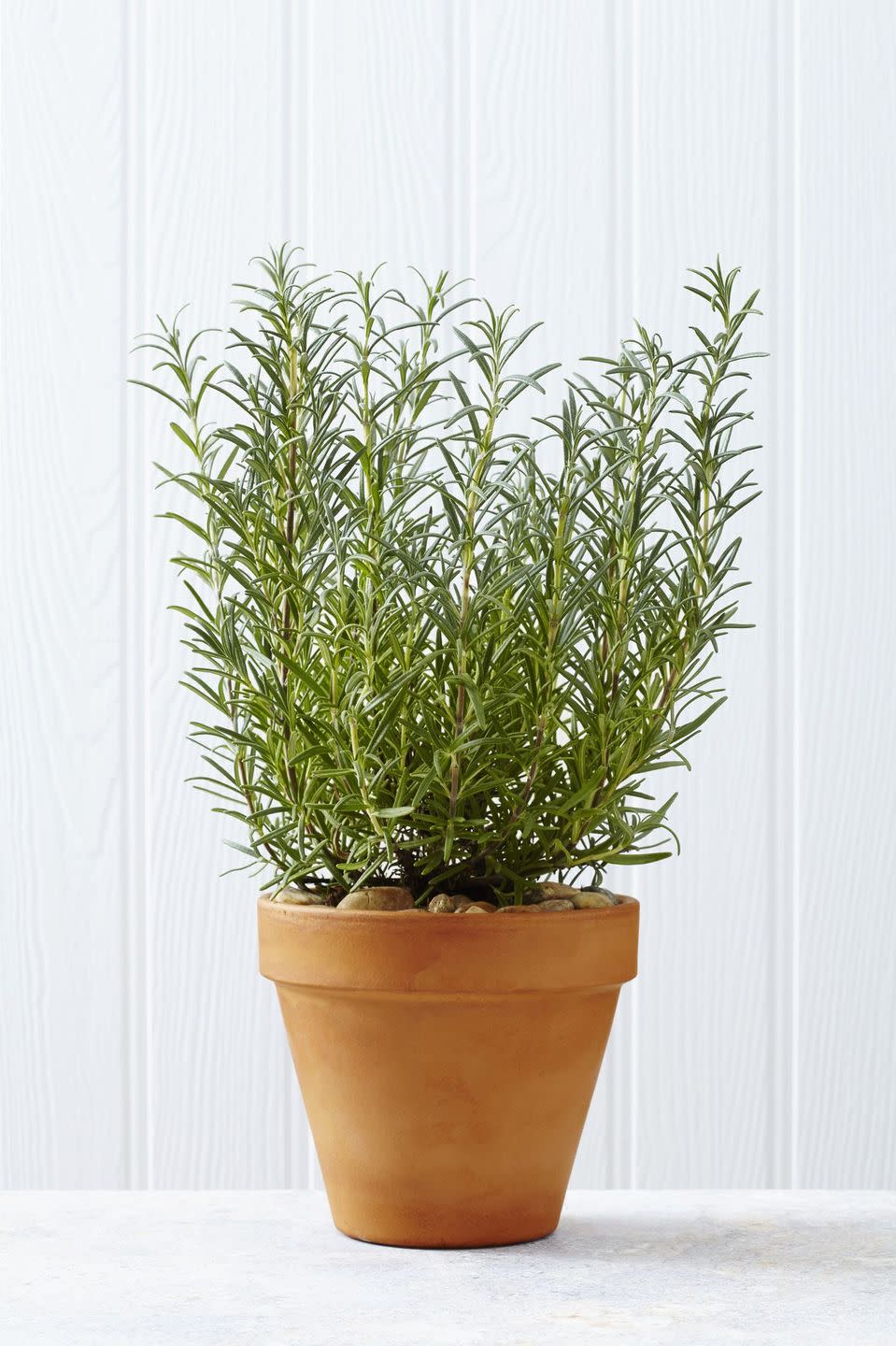
Spider Plant (Chlorophytum comosum)
Your mom or grandma may have grown this classic houseplant in the '70s, but it’s still worthy of a place in your home today.
The striped leaves arch from the center, and eventually, the plant produces oodles of baby Spider Plants. And how cute is this? They’re called “plantlets!”
Bedroom Plant Care Tips: This plant prefers medium to bright light and steady moisture.
Pet Safe? Yes. This is non-toxic to dogs and cats.
How to Care for a Spider Plant Like a Pro
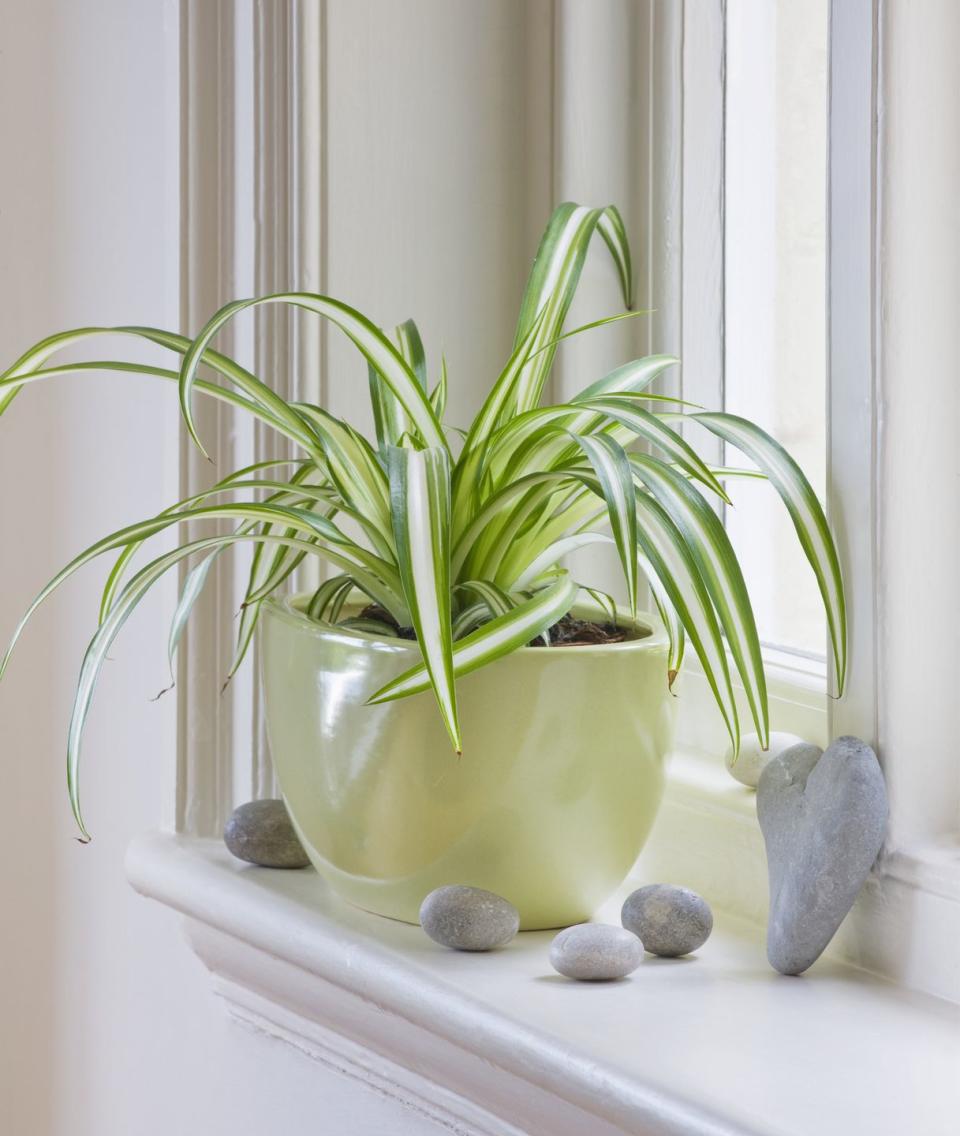
Pothos (Epipremnum aureum)
Pothos is quite possibly the easiest houseplant to grow. It has shiny, heart-shaped leaves and vining stems that can grow to several feet long.
Bedroom Plant Care Tips: Preferring moderate to bright light, Pothos does best when the soil dries out between waterings.
Pet Safe? No, toxic to pets.
Read more: Pothos Plant Growing Tips
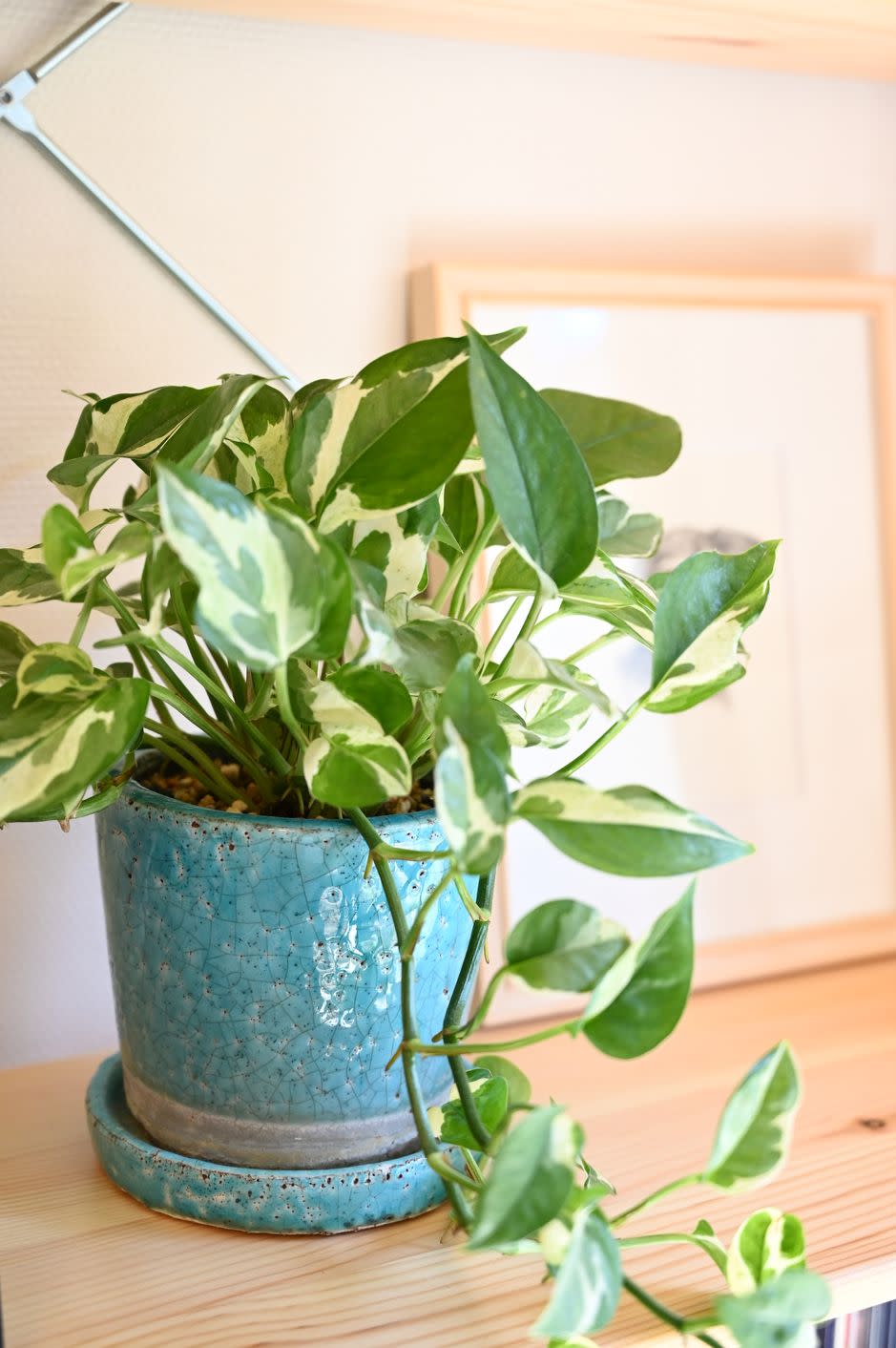
Peace Lily (Spathiphyllum spp.)
These luxurious-looking plants are surprisingly fuss-free.
Bedroom Plant Care Tips: Peace lilies tolerate low to moderate light, though they bloom best in brighter light. We suggest allowing the soil to become nearly dry before watering and dividing every five years or so to create new baby plants.
Pet Safe? No, Peace Lily are toxic to pets.
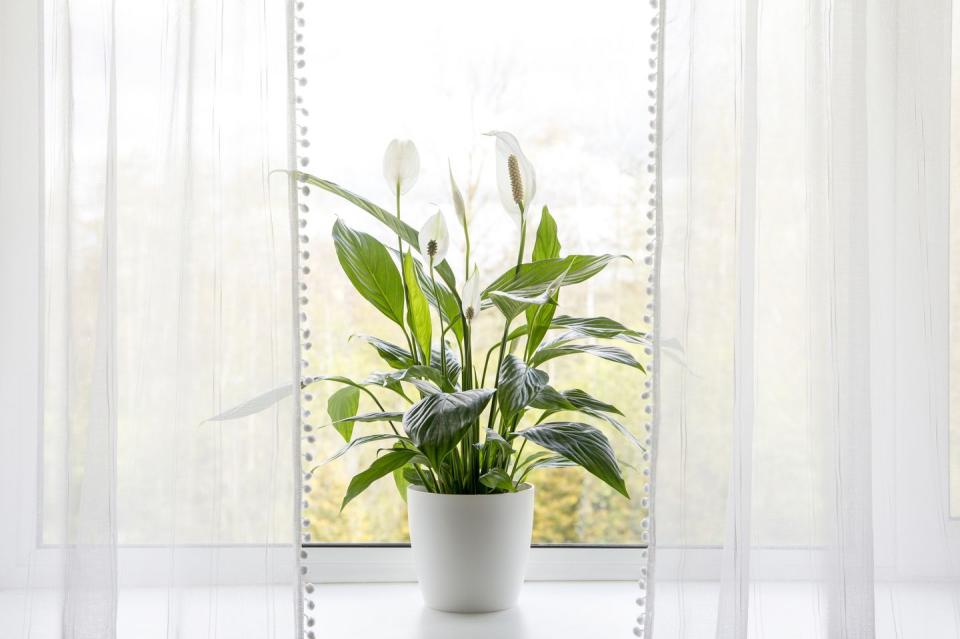
You Might Also Like


